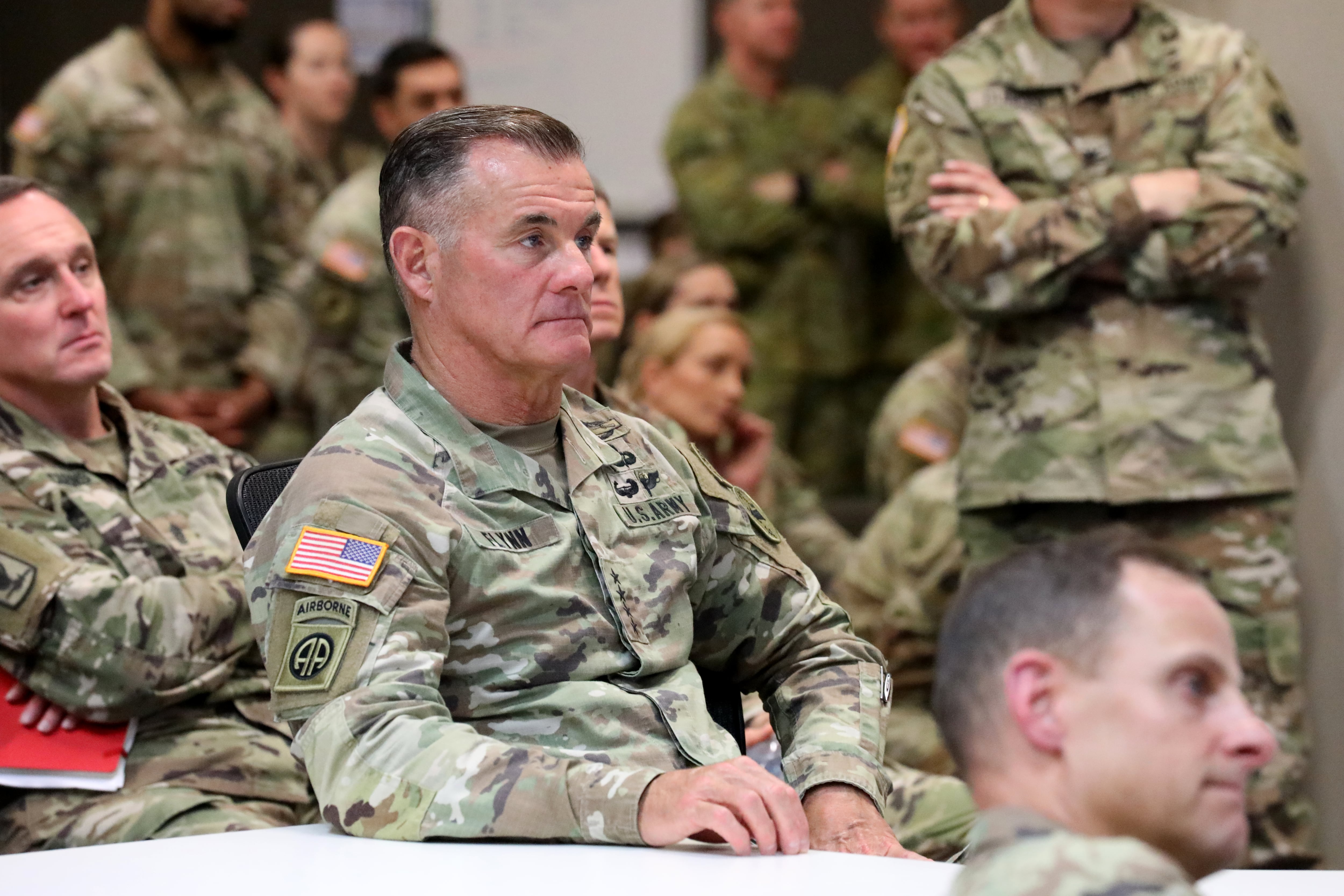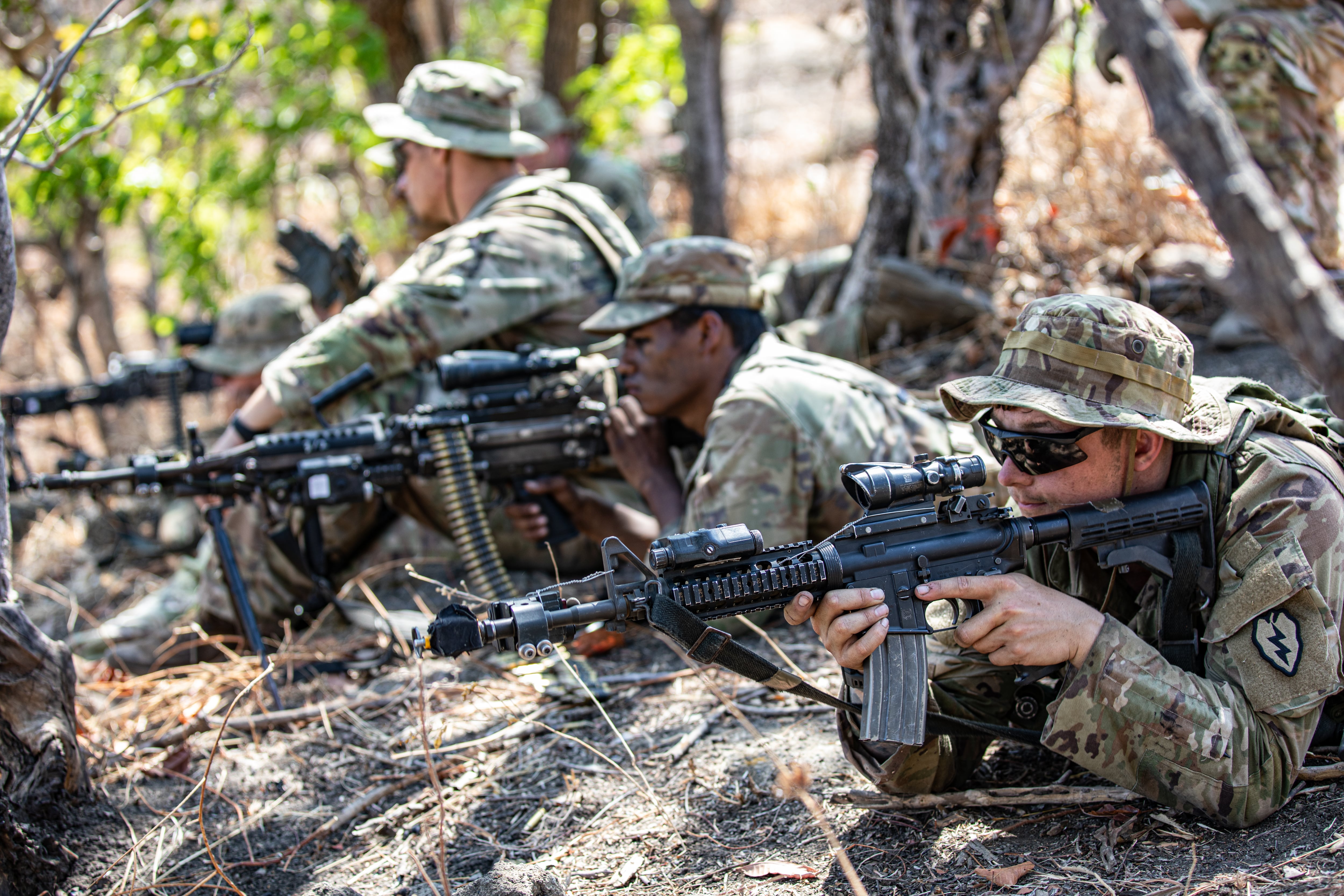The top officer for Army forces in the Pacific region challenged soldiers with a “call to action” to look at the challenges in that area and to think hard about where they’ll be in the next five to 10 years and what they’re doing today to prepare.
In a virtual address to attendees at the annual Maneuver Warfighter Conference at Fort Moore, Georgia, on Tuesday, U.S. Army Pacific commander Gen. Charles Flynn said that Chinese political and military leaders are likely to make serious choices on how to use their growing military power at some point in the next decade.
“First of all, this century is going to be defined by what actually happens in the Indo-Pacific and Asia. It is the most consequential region at the most consequential time, and it has the most consequential adversary that has both the capability and the will, and it demonstrates it every single day to conduct operations to counter the United States… and what a free and open Indo Pacific represents to the world,” Flynn said.
The four-star wants soldiers to take a tough look at their own preparedness.
“Think about where you’re going to be in the next five to 10 years…and what that means to you, to the Army and to the country,” he said.
Flynn is not alone in his concerns.
Air Force Secretary Frank Kendall said Monday at the Air Force Association Annual Air, Space and Cyber Conference that “intelligence couldn’t be clearer. Whatever its actual intentions may be I could not say, but China is preparing for a war and specifically for a war with the United States,” CNN Pentagon reporter Haley Britzky reported.
Flynn laid out a brief, pointing to specific map areas and highlighting Chinese government and military efforts that include building dams in Vietnam, forming islands in the South China Sea, engaging in predatory lending “debt traps” with smaller nations in the Pacific to seize terrain, ports and other features in lieu of payments, and a series of defenses and alliances with North Korea, Russia and Pakistan.
The New York Times reported recently that the leaders of North Korea and Russia are in talks for North Korea to provide additional munitions to Russia so that it may continue its war in Ukraine.
“By 2033 I believe that something is going to have to be decided by President Xi (Jinping),” Flynn said. “He’s 70 years old. And generally, by the time he’s 80 he’s going to have to make a decision about what to do with the modernization, with the reorganization, and with the military instrument that he’s built and is building. He’s stated it publicly, he’s basically told his commanders to be ready by 2027.”
Flynn then highlighted how the Army has ceded much of its history and capabilities in the Pacific region but is regaining that through a series of efforts, some of which he’d previously shared with Army Times.
Those include Operation Pacific Pathways, an annual, 40-exercise program that flows soldiers from various Pacific-focused and United States-based units into the region to work alongside partner and allied militaries.

Other work includes the expansion of the Joint Pacific Multinational Training Center, which offers combat training capabilities both on-site in Hawaii and Alaska and through an exportable model that can be set up and conducted in host nations.
Though often considered more of an air and maritime command, Flynn has pushed back against that view for years now.
“…This (anti-access, area denial) arsenal is primarily designed to defeat maritime and airpower,” Flynn said. “Notice, however, it is not designed to find, fix and finish distributed, mobile, lethal and nonlethal fixed and semi-fixed land power armies.”
But Flynn isn’t going full Army green. The big green machine will still need some help.
“When I say land power, I mean the Marine Corps and the Special Operations Forces and I mean these large armies that represent the region,” Flynn said.
By having these multiple options to thwart Chinese military expansion, Flynn said the United States and its allies have “created a targeting dilemma for the [People’s Republic of China].”
Lastly, the line of effort that Flynn told the audience concerns him most currently as it could present gaps should conflict break out – joint interior lines.
Essentially the series of defenses that ring China with an array of formations, capabilities, weapons and more that stretch from the northern reaches of the Pacific through Japan and southward into the Philippines and hooks around through Malaysia and into Thailand and neighboring countries.
But, Flynn noted, these “interior lines” are growing through increases in partner military force capability.
Thailand recently ordered an entire brigade combat team’s worth of equipment, enough to field 144 Strykers, Flynn said.
Japan has increased its military spending each year for the past decade, with a 26% increase this past year alone and U.S. and Indian military exercises have also grown in scale and complexity in recent years.
“We need to understand the place, the adversary, the adversary’s capabilities and we can’t get there fast enough ladies and gentlemen,” Flynn said. “We have to understand what’s at stake out here.”
Todd South has written about crime, courts, government and the military for multiple publications since 2004 and was named a 2014 Pulitzer finalist for a co-written project on witness intimidation. Todd is a Marine veteran of the Iraq War.




